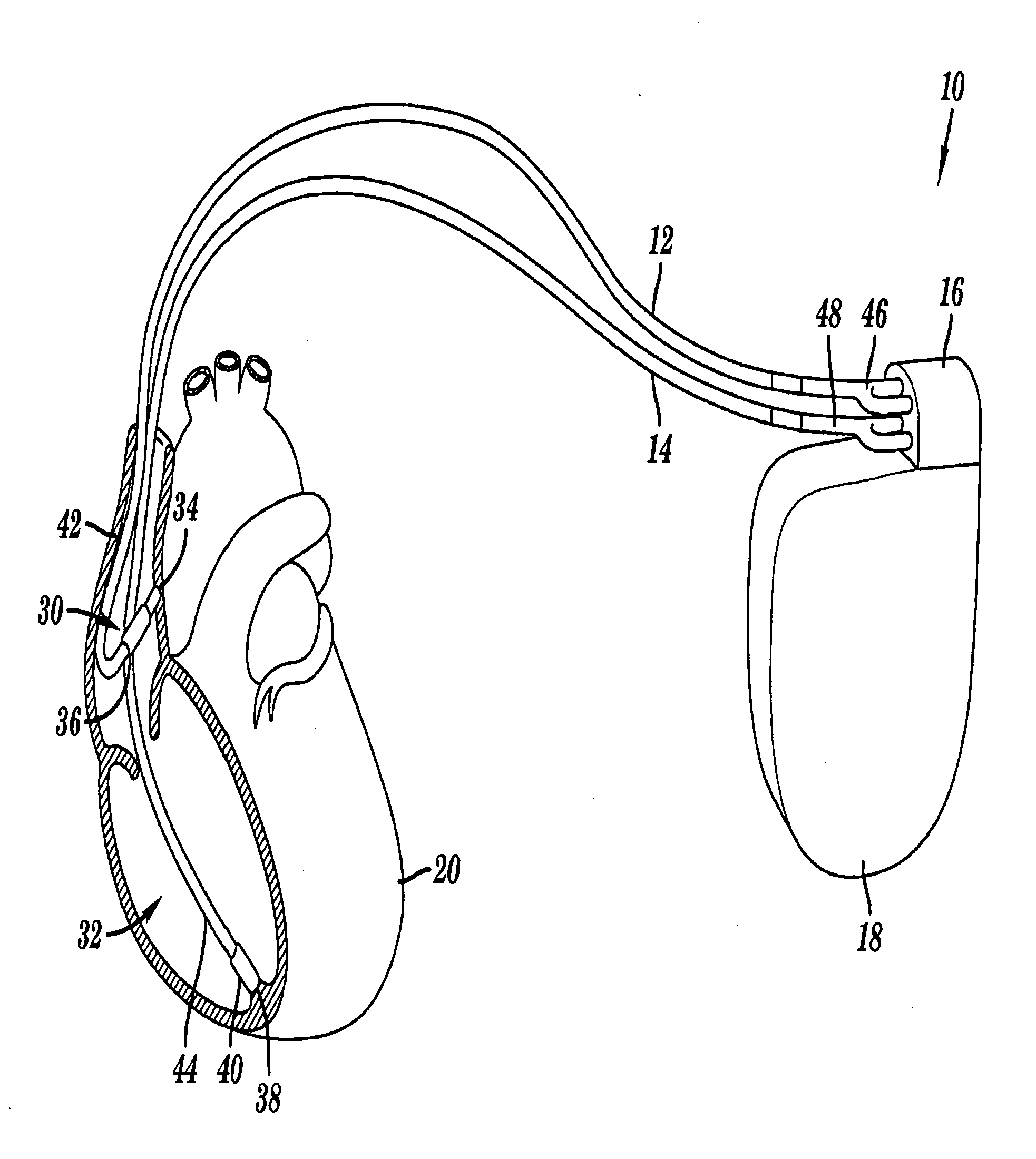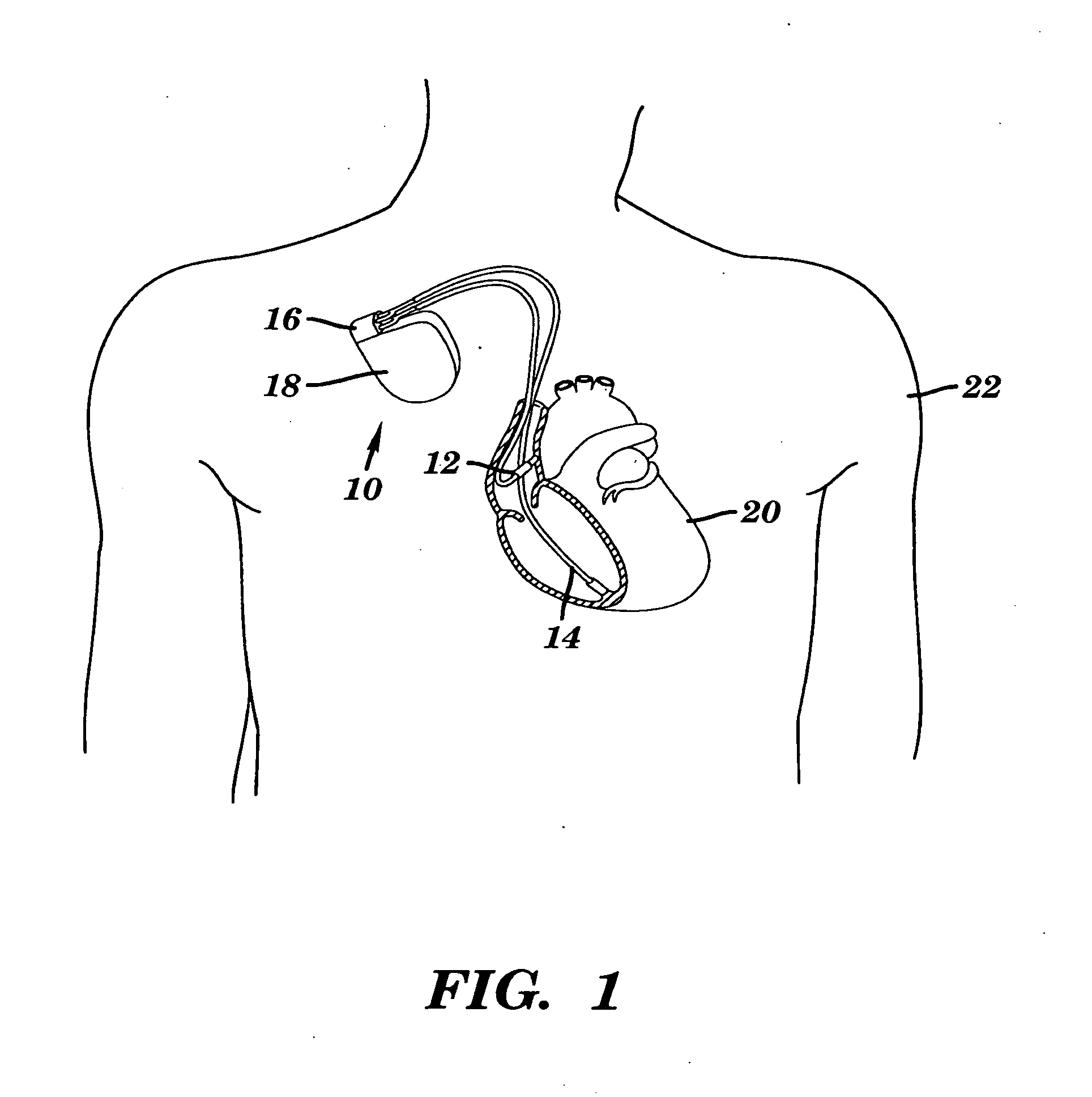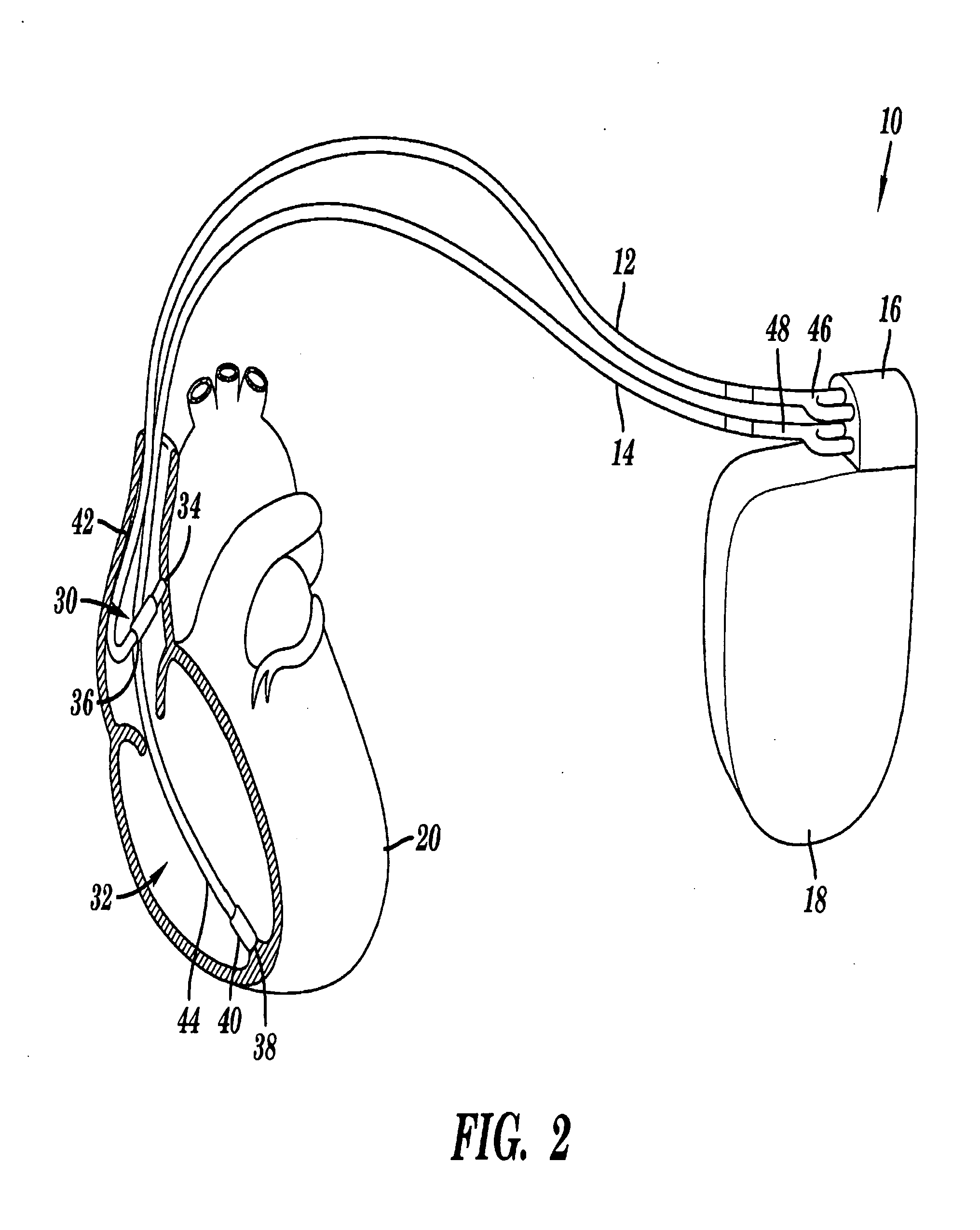Pacemaker with neurocardiogenic syncope detection and therapy utilizing minute ventilation input
- Summary
- Abstract
- Description
- Claims
- Application Information
AI Technical Summary
Benefits of technology
Problems solved by technology
Method used
Image
Examples
Embodiment Construction
A pacing and sensing algorithm which uses respiratory input to detect impending neurocardiogenic syncope is described. This algorithm, when used with conventional pacemakers, may be utilized to prevent recurrent syncope in patients with isolated recurrent neurocardiogenic syncope, as well in patients with established indications for pacemakers (e.g., conduction system disease, sudden cardiac death prophylaxis, cardiac resynchronization) and concurrent neurocardiogenic syncope. The latter group is increasingly prevalent. The algorithm provides both a diagnostic and therapeutic option for patients with isolated neurocardiogenic syncope, and diverse treatment options for patients with an existing need for pacemaker therapy.
The inventors discovered that a 2 to 3 fold increase in minute ventilation precedes the drop in heart rate and blood pressure in neurocardiogenic syncope. This increase in minute ventilation is driven exclusively by increases in tidal volume (TV) rather than respirat...
PUM
 Login to View More
Login to View More Abstract
Description
Claims
Application Information
 Login to View More
Login to View More - R&D
- Intellectual Property
- Life Sciences
- Materials
- Tech Scout
- Unparalleled Data Quality
- Higher Quality Content
- 60% Fewer Hallucinations
Browse by: Latest US Patents, China's latest patents, Technical Efficacy Thesaurus, Application Domain, Technology Topic, Popular Technical Reports.
© 2025 PatSnap. All rights reserved.Legal|Privacy policy|Modern Slavery Act Transparency Statement|Sitemap|About US| Contact US: help@patsnap.com



